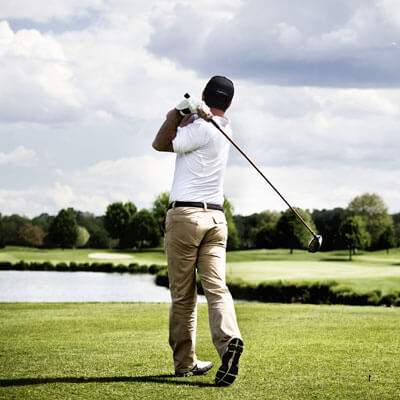 Many golfers use the off-season to address any injuries they have incurred throughout the regular season, usually focusing on strength, stability, and/or mobility. Fortunately, in Singapore, we have the opportunity to play golf year-round. In this case, it takes some planning to create a training protocol that drives back overtraining and focuses on injury prevention.
Many golfers use the off-season to address any injuries they have incurred throughout the regular season, usually focusing on strength, stability, and/or mobility. Fortunately, in Singapore, we have the opportunity to play golf year-round. In this case, it takes some planning to create a training protocol that drives back overtraining and focuses on injury prevention.
Current studies suggest that on average 40 to 60% of golfers sustain a golf-related injury each year. Approximately 25% of these participants are over 65 years old, however, injuries are seen among golfers of all ages and gender. Of these injuries, the most common are lower back, shoulder, elbow, and wrist injuries. Many of these problems can be attributed to poor technique, which often falls into the overuse or repetitive strain categories of diagnosis.
Injury prevention is often much easier than one thinks and by implementing a few basic strategies into their current game they can have longer-lasting effects on health management on the course.
5 Pillars Injury Prevention:
Warm-up
Too often this part of the game is neglected and as a result, the player is put at a higher risk of injury. The goal of a good warm-up is to promote both physical and psychological readiness, through increased body temperature from enhanced blood flow, therefore promoting improved muscle and tendon flexibility. A proper warm-up can often be the small difference between a good and great round that day. Start with some light cardiovascular exercise (jogging or fast pace walking) following by dynamic stretching (meaning you are moving as you stretch) and club warm-up moving from the short game on the green to full swings starting with your short irons (SW-8).
Equipment
There are two pieces of equipment that can drastically affect a player’s injury rate. These are the clubs they are playing with most often and the shoes they are wearing to walk those long distances. With all the new types of clubs and shoes available, make sure both are professionally fitted. Shoe spikes are another consideration. Long spikes will create additional friction and torque between the turf and player. This is not always suitable for players with previous knee or hip injuries due to the additional rotation placed on the joints. Such players may want to consider short spikes or no spikes.
Strength
Although faster speed will indeed help you to hit the ball further, injury prevention requires specific strength training and motor control to help stabilize the smaller structures/muscles. It is important to not only focus on the muscles that drive the ball forward during the swing phase of acceleration but also training the many other muscles that help to decelerate the body on the back end. The best way to train these “acceleration and deceleration” muscles is through resistance band training or pulley systems that focus on rotation and chopping motions; specifically, the core and gluteus muscles.
Flexibility
A healthy golf swing comes through flexibility. Rotational stresses from the swing phase will put considerable pressure on the spine and the surrounding muscles. Having proper flexibility through stretching will help minimize the minor muscle strains in the back that easy snowball into severe injuries. An emphasis on increasing shoulder, upper, lower back, and hips should be the primary concern to avoid undue stress on compensatory muscles and joints.
Technique
Poor technique is often one of the most common causes of injuries, especially in amateur golfers. The golf swing is complex and has many different parts that make it nearly impossible to achieve the “perfect swing”. Routine coaching lessons, especially as a new player to fine-tune a player’s swing, can eliminate poor technique and in the long run help with injury prevention and time spent in rehabilitation therapy when you’d rather be on the course.
In conclusion, making sure that you stay on top of injuries through proper treatment and preventing them from becoming chronic or having new ones arise is the key to helping you enjoy the game for years to come. Even better, preventing injuries from occurring rather than trying to fix an injury once it has occurred is most favorable to long-term health on and off the course.
References
Brandon B, Pearce PZ. Training to prevent golf injury. Current Sports Medicine Reports. (2009)8 (3): 142-146
Parziale, JR. Healthy swing: A golf rehabilitation model. American Journal of Physical Medicine Rehabilitation. (2002) 81 (7): 498-501.
